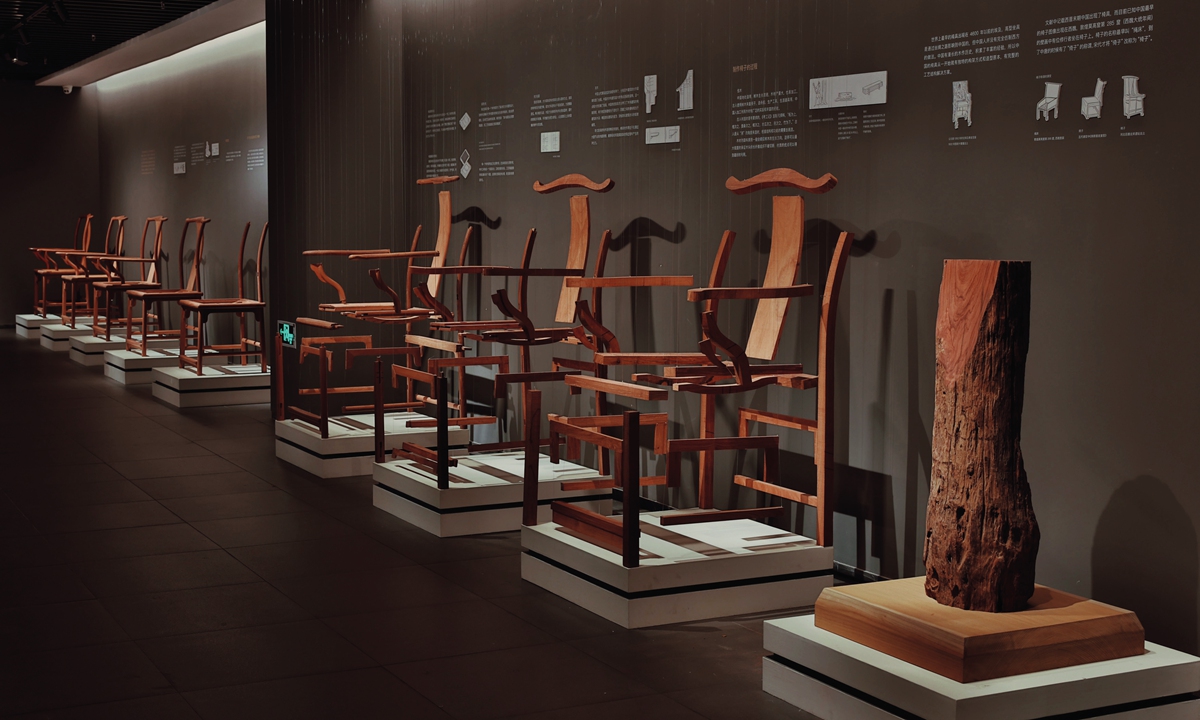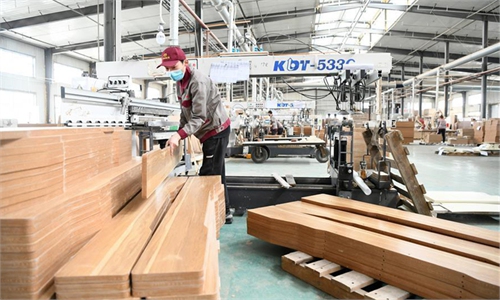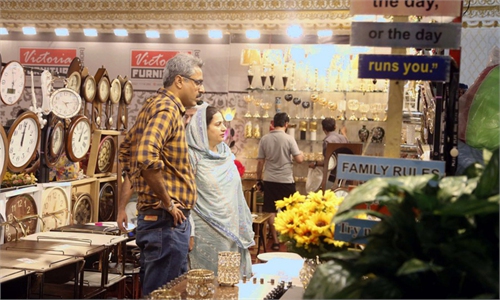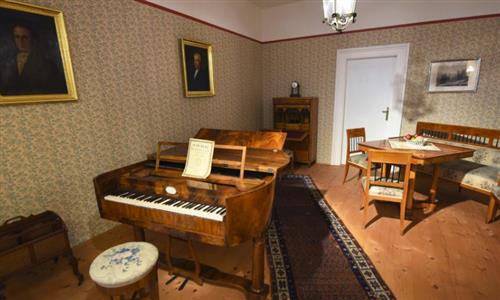ARTS / ART
First traditional woodwork exhibition hall welcomes young people
Charm of ancient wisdom
The Ming-style chair must be one of the most well-known pieces of Chinese furniture in the world, because of its precious wood, comfortable design, simple decoration and superb craftsmanship.

"The chair reshaped the lives of Chinese people more than 1,000 years ago to a certain extent. It is also the furniture with the closest relationship to people. Ancient craftsmen put a lot of effort into their production," Deng Bin, a teacher at the School of Design, Jiangnan University and scholar of ancient Chinese arts and crafts, told the Global Times on Wednesday.
Through the exhibition, titled Seat of Honor: Ancient Chinese Seating Furniture from Collection of Liu Yu Study, Deng hopes that audiences "can get a glimpse of ancient Chinese furniture, the rich and diverse culture, and understand the wisdom and extraordinary skills of ancient Chinese craftsmen."
Shaped by Chinese culture
It took hundreds of years for the chair to gain popularity throughout China with the influence of foreign customs and the spread of Buddhism. Before that, the ancient Chinese knelt or sat cross-legged upon woven mats surrounded by various furnishings, including low tables and armrests. However, chairs were also adapted into China's culture as Chinese people's lifestyles transformed over 1,000 years, including dining customs and the use of musical instruments.
"Wood has been closely connected to us. Chairs have the closest relationship to people. They are also the most frequently used furniture. It is not easy to preserve an excellent ancient chair to the present day," added Deng, who echoed Ou Jinze's sentiments about the importance of presenting such woodwork to more audiences through a special exhibition.
And that's how Ou Jinze, the director of Ou's Traditional Woodwork Exhibition Hall, and his father Ou Shengchun realized their dream. Ou Shengchun was once a skilled wood craftsman and operated a furniture business decades ago.
"Both my father and I hope more people can come to understand the connotation and charm of classic furniture and feel the beauty of traditional Chinese culture," said director Ou.
With a total of 370 exhibits, the hall aims to give a full picture of China's traditional woodworking history including historical and cultural introductions to ancient furniture, and its related literature and study. Chapters like the story of wood, a brief history of ancient Chinese furniture, and tools and materials used are all included.
According to Deng, the ancient furniture pieces are all treasures in China's history. They have "experienced the cooperation, dialogue, and interaction between craftsmen and cultural elites at that time." They are not only furniture but also provide a profile of an era and culture. They came from all over the country, served people from different social classes in ancient times, and were made with different materials and techniques. These pieces of furniture were all made by unknown craftsmen.
"Each piece of ancient furniture is a book written by ancient craftsmen for the future," he added.

Traditional Chinese furniture was introduced into the West through various ways as Westerners marveled at China's creative designs and craftsmanship. To this day, there are still many ancient Chinese furniture collections at overseas museums such as the Victoria and Albert Museum in the UK, which houses a number of rarely-seen furniture from the Ming (1368-1644) and Qing (1644-1911) dynasties.
The texture of wood was fully utilized to reveal natural beauty. Writings and paintings by well-known calligraphers and painters were engraved on desks and chairs. Inspired by Chinese designs, Western furniture borrowed various elements.
Ou Jinze said that simple structure and minimal decoration set off the natural beauty of the wood. This meaningful simplicity was achieved without sacrificing comfort. Scientific protection for the bodily form was reflected in details such as curves, lines, height and size. Traditional Chinese culture emphasizes the positive interplay between nature and human beings.
"What we do is to attract young people as well as young kids to get in touch with such good Chinese heritage," said the director.
As a museum lover, Ou has absorbed many means of building interactions with visitors based on his own museum experience. He worked with Deng's team to bring in the "experience corner" to help visitors distinguish between different fragrances of different woods and to offer public lessons for young kids.
Far from just Guangdong, across China, more and more craftsmen and artists are pouring their efforts into building the "world of wood." Jiangmaoshe, a studio in East China's Shandong Province, has expanded woodwork to all aspects of life. "Let Gen Z fall in love with wood," said Da Yu, the studio's founder, who sees it as their goal and responsibility.

Ou Jinze Photo: Courtesy of the exhibition hall
The opening exhibition at Ou's Traditional Woodwork Exhibition Hall in Zhongshan, South China's Guangdong Province, has not only seen the beauty of the 50 ancient chairs but also Chinese wisdom and the craftsmanship behind it."The chair reshaped the lives of Chinese people more than 1,000 years ago to a certain extent. It is also the furniture with the closest relationship to people. Ancient craftsmen put a lot of effort into their production," Deng Bin, a teacher at the School of Design, Jiangnan University and scholar of ancient Chinese arts and crafts, told the Global Times on Wednesday.
Through the exhibition, titled Seat of Honor: Ancient Chinese Seating Furniture from Collection of Liu Yu Study, Deng hopes that audiences "can get a glimpse of ancient Chinese furniture, the rich and diverse culture, and understand the wisdom and extraordinary skills of ancient Chinese craftsmen."
Shaped by Chinese culture
It took hundreds of years for the chair to gain popularity throughout China with the influence of foreign customs and the spread of Buddhism. Before that, the ancient Chinese knelt or sat cross-legged upon woven mats surrounded by various furnishings, including low tables and armrests. However, chairs were also adapted into China's culture as Chinese people's lifestyles transformed over 1,000 years, including dining customs and the use of musical instruments.
"Wood has been closely connected to us. Chairs have the closest relationship to people. They are also the most frequently used furniture. It is not easy to preserve an excellent ancient chair to the present day," added Deng, who echoed Ou Jinze's sentiments about the importance of presenting such woodwork to more audiences through a special exhibition.
And that's how Ou Jinze, the director of Ou's Traditional Woodwork Exhibition Hall, and his father Ou Shengchun realized their dream. Ou Shengchun was once a skilled wood craftsman and operated a furniture business decades ago.
"Both my father and I hope more people can come to understand the connotation and charm of classic furniture and feel the beauty of traditional Chinese culture," said director Ou.
With a total of 370 exhibits, the hall aims to give a full picture of China's traditional woodworking history including historical and cultural introductions to ancient furniture, and its related literature and study. Chapters like the story of wood, a brief history of ancient Chinese furniture, and tools and materials used are all included.
According to Deng, the ancient furniture pieces are all treasures in China's history. They have "experienced the cooperation, dialogue, and interaction between craftsmen and cultural elites at that time." They are not only furniture but also provide a profile of an era and culture. They came from all over the country, served people from different social classes in ancient times, and were made with different materials and techniques. These pieces of furniture were all made by unknown craftsmen.
"Each piece of ancient furniture is a book written by ancient craftsmen for the future," he added.

Traditional Chinese wood chairs on display at Ou's Traditional Woodwork Exhibition Hall in Zhongshan, South China's Guangdong Province Photo: Courtesy of the exhibition hall
For young peopleTraditional Chinese furniture was introduced into the West through various ways as Westerners marveled at China's creative designs and craftsmanship. To this day, there are still many ancient Chinese furniture collections at overseas museums such as the Victoria and Albert Museum in the UK, which houses a number of rarely-seen furniture from the Ming (1368-1644) and Qing (1644-1911) dynasties.
The texture of wood was fully utilized to reveal natural beauty. Writings and paintings by well-known calligraphers and painters were engraved on desks and chairs. Inspired by Chinese designs, Western furniture borrowed various elements.
Ou Jinze said that simple structure and minimal decoration set off the natural beauty of the wood. This meaningful simplicity was achieved without sacrificing comfort. Scientific protection for the bodily form was reflected in details such as curves, lines, height and size. Traditional Chinese culture emphasizes the positive interplay between nature and human beings.
"What we do is to attract young people as well as young kids to get in touch with such good Chinese heritage," said the director.
As a museum lover, Ou has absorbed many means of building interactions with visitors based on his own museum experience. He worked with Deng's team to bring in the "experience corner" to help visitors distinguish between different fragrances of different woods and to offer public lessons for young kids.
Far from just Guangdong, across China, more and more craftsmen and artists are pouring their efforts into building the "world of wood." Jiangmaoshe, a studio in East China's Shandong Province, has expanded woodwork to all aspects of life. "Let Gen Z fall in love with wood," said Da Yu, the studio's founder, who sees it as their goal and responsibility.





